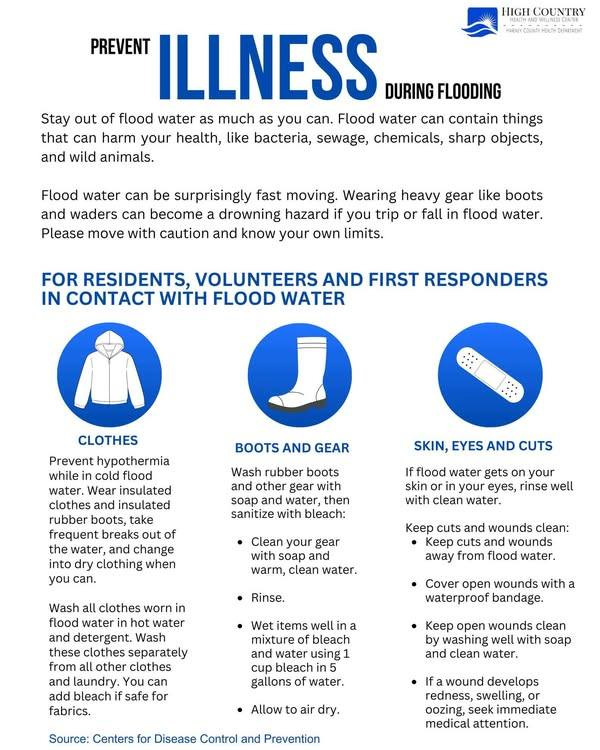NFORMATION ON WHAT IS HAPPENING AND WHERE TO GO FOR HELP!
We will do our best to keep the community notified of the ongoing disaster recovery process, provide links and information to help you through this difficult time.
Drinking water remains safe, but E. coli and Coliform have been found in the Harney County floodwaters. Fact sheet on E. coli in floodwaters:

Emergency Management Services
Mission Statement: To build strength and resiliency by enhancing sovereignty to be self-sufficient through education, preparedness and effective response efforts, while supporting the Burns Paiute Tribal Mission with cultural respect, dignity, and purpose.
Emergency Management Program
Objective: To prepare the Burns Paiute Community in the event of a natural or a man-made disasters and prepare for climate adaptation in our changing world.
Tribal Fire Services
Objective: Burns Paiute Public Safety – Fire Protection Services have initiated services to meet the responsibilities of fire protection for the Burns Paiute Indian Community, and mutual aid assistance to the surrounding communities. We will continue to work on Fire Mitigation efforts to prepare, prevent and recover from any event.
“Severe storms, freezing temperatures, hurricanes and heat waves are becoming more common throughout the world. In 2020, there were 457 weather-related fatalities in the United States. The leading cause of weather fatalities in the U.S. was extreme heat, followed by floods and tornadoes.
Seniors are at an especially high risk of experiencing injuries and illnesses related to natural disasters. An estimated 85% of older adults live with one or more chronic health conditions and reduced mobility These factors make dealing with power outages, extreme temperatures and emergency evacuations difficult.
Although we can’t prevent weather-related natural disasters, being prepared can make all the difference during an emergency. Being prepared means knowing what your personal risks are and the types of natural disasters that are likely to occur where you live.
In this guide, you’ll learn what you can do to stay safe during a disaster. You’ll discover helpful tips on preparing your home for extreme weather events and how to assess the risks in your region. You’ll also find disaster preparedness checklists for seniors and caregivers, as well as pet owners.”
Wildfire Smoke Readiness & Response: Resources for Region 10 Tribes
Where to Find Real-Time Data
Washington Oregon Idaho Alaska
Tools for Outreach & Keeping People Safe
Schools & Children’s Health
EPA Region 10 Contacts:
Erin McTigue, Smoke Management Coordinator: McTigue.Erin@epa.gov, 206-553-1254
Sandra Brozusky, Tribal Air Team Lead, Brozusky.Sandra@epa.gov, 206-553-5317
Althea Godfrey, FARR Compliance, Burn Ban Lead, Godfrey.Althea@epa.gov, 206-553-1604
Wildfire and Smoke Season
(Use the camera function on your smartphone to access the QR codes. If the links do not work, type the address in on your phone, tablet, laptop, or desktop.)
QR Code for https://www.airnow.gov/wildfires/be-smoke-ready/
Air Now “Be Smoke Ready” message.
Plan Ahead: Stock up; Give yourself more time; Talk with Healthcare Provider; Prepare.

If you live in an area where the wildfire risk is high, take steps now to prepare for fire season. Being prepared for fire season is especially important for the health of children, older adults, and people with heart or lung disease.
For More information:
Wildfire Smoke Factsheet: Prepare for Fire Season:
https://www.airnow.gov/sites/default/files/2021-07/prepare-for-fire-season.pdf
QR Code: Burns, OR Air Quality Status from www.Airnow.gov
